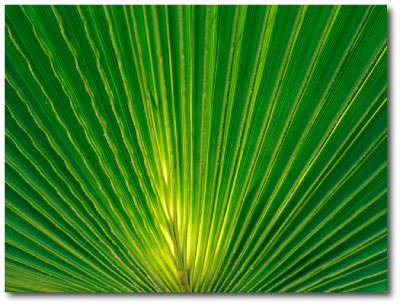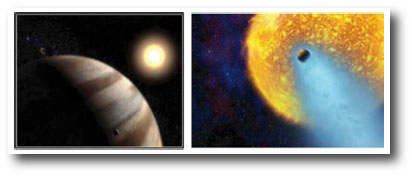
I think readers sometimes wonder why oklo.org posts about extrasolar planets tend to be illustrated with seemingly random photographs from my house, my yard, and my neighborhood that bear (at best) a distant relation to the topic at hand. I’m liable to get written up on charges of pseudo-artistic pretentiousness for attempting to run the Jones Soda of Astronomy.
We’re taking this approach for several reasons. The oklo blog is designed to recruit users for the systemic collaboration, and and I’m paying the ISP out-of-pocket. An idiosyncratic format makes it easier to keep the posts flowing in the midst of the chronically never caught up academic routine of teaching, research, qualifying exams, topic defenses, homework grading, proposal writing, committee meetings, undergraduate theses, graduate advising, editing, visiting speaker hosting, etc.
Another reason is to drive home my belief that the real interest, the real fascination with extrasolar planets will ultimately lie in their tiny ephemeral details. It’s one thing to gain an abstract, theoretical understanding of the growth of planetary cores through the accretion of small bodies — it’s quite another to see a one-kilometer bolide succumb to the fiery tendrils of fluid instability as it slams into the toxic atmospheric murk of an unsettled four Earth-mass world. It’s one thing to know Neptune’s orbital eccentricity to five significant figures, it’s quite another to swoop in close to see the flow of feathered cirrus outline the turbulent core of the great dark spot.
I can’t get over the fact that I can photograph the subtly intricate details of a habitable planet available in my own backyard, and later that afternoon have them transmitted digitally across the globe. Just think, if we had an autonomous lander with a 5-megapixel camera engaged in a small-scale survey of a hectare-sized region of an Earth-mass terrestrial planet in the habitable zone of any G2V star other than the Sun, then this site would be getting a lot more than 400 visitors per day.
Finally, in resorting to the use of photographs of familiar objects to illustrate unfamiliar things, I want to underscore the urgent need for scientifically correct visualizations of extrasolar planets.
New planet-related discoveries are the subject of numerous NASA and NSF press releases and press conferences, and because these dicoveries generally report information obtained by indirect observational techniques, there’s a need for illustrations to accompany the releases “to capture the public interest”.

During the last ten years, these images conveying scientific results have generally been supplied by artist’s impressions. On occasion, some of these have veered toward the bizarre, the lurid, and the just plain wrong. Consider, for example, the above two illustrations of HD 209458 b. Both appeared in fairly recent HST press releases, and both are riddled with profound misconceptions. First look at that painting on the left. At the time when the image was most recently released, it was well-known that satellite orbits around the planet are highly dynamically unstable (e.g. Barnes and O’Brien 2002). The shadowing of the planet only makes sense if the star is much smaller than the planet and is somehow orbiting just above the planetary surface. The number of cloud bands and zones indicate that the planet is rotating with a ~12 hour period (like Jupiter) whereas in reality, the planet must be spin-synchronous with its P=3.5257 day orbit, and should probably have a single prominent equatorial jet. The panel on the right, which attempts to show that the planet is surrounded by an optically thin, yet Lyman-alpha-absorbing hydrogen cloud, is dramatically inconsistent with the laws of perspective, illumination, and radiative transfer. Literally billions of dollars are being spent on extrasolar planets. Surely, at the pinnacle of our dispatches, we can do better than this.
Genuinely realistic visualizations of extrasolar planets that incorporate all known information in a self-consistent way are going to become an oklo.org rallying cry over the coming year. We won’t be flying to Upsilon Andromedae any time soon. Radial velocities, photometric light curves, stellar and planetary models, dynamical integrators, radiative transfer routines, hydrodynamic codes, and Maya are what we have to work with. If it is the destiny of the extrasolar planets to truly inspire, then we must strive to see them as they really are.

As a hobbyist space artist, I do try to make the illustrations reflect what we know… if there is any good (free) material about how the cloud bands would look on a slowly-rotating planet, or other appearance-related information it would be nice to know: it would definitely come in handy!
Agreed! I should definitely clarify that I’m not criticizing space art per se. I was extremely inspired when I was growing up by Chesley Bonestell, Ron Miller, and William K. Hartmann’s work. What I’m advocating is a better communication between theorists, observers, and artists. Observational and theoretical results go through rigorous peer-review prior to publication, and I think that the artistic pieces need to undergo a similar level of scrutiny if they are going to be brought before the public in an official NASA or NSF press release.
I’ll be posting a lot more on this topic, but to get started, it would be useful to have a look at the papers of Cho et al (2003) and Cooper and Showman (2005) which give dynamical simulations of the flow patterns on a synchronously rotating planet such as HD 209458b. These papers are both available from astro-ph (no subscription required).
best,
Greg
Thanks for the links. Definitely communication between scientists and artists is pretty much essential in realistic space art. It’s definitely good to have some references to fall back on when dealing with unfamiliar objects such as extrasolar planets, e.g. Sudarsky et al.’s 5-class system for extrasolar giants. It still leaves the issue of what silicate clouds or alkali metal haze would actually look like, though.
One of the problems I’ve come across is that the “popular science” literature tends to stop a few frustrating steps short of what the space artist needs; e.g. it’s quite easy to find an explanation of why the sky is blue, but it’s a lot harder to find out what the sky colour would be if, say, we had an M-class sun, or the atmosphere was 100 times thicker, etc.